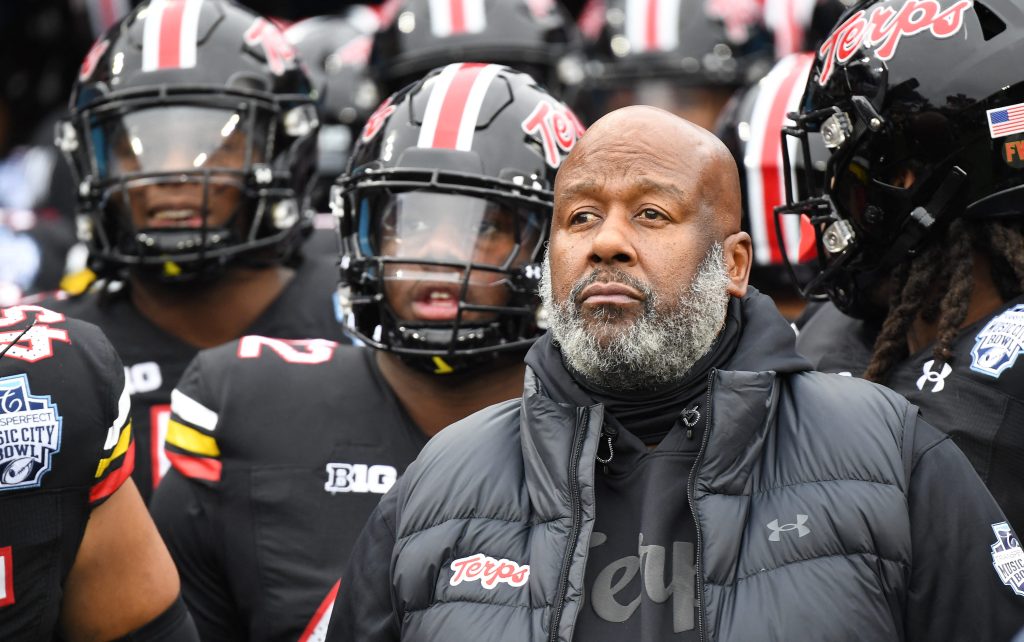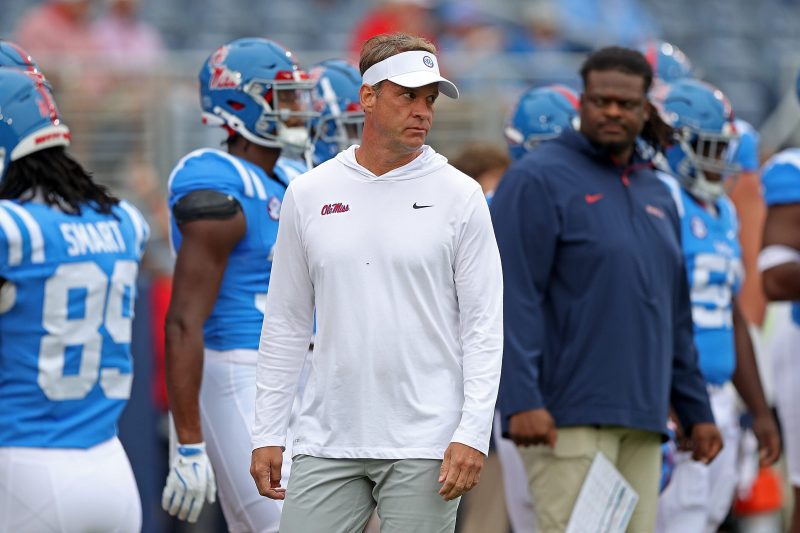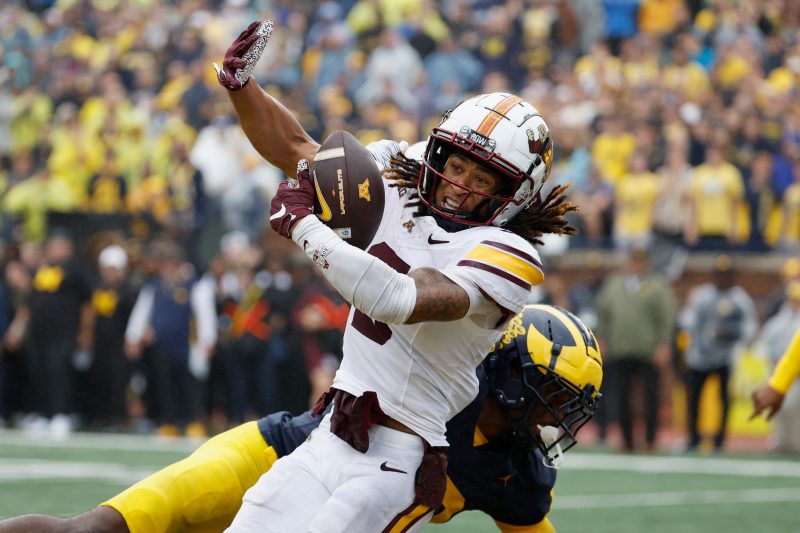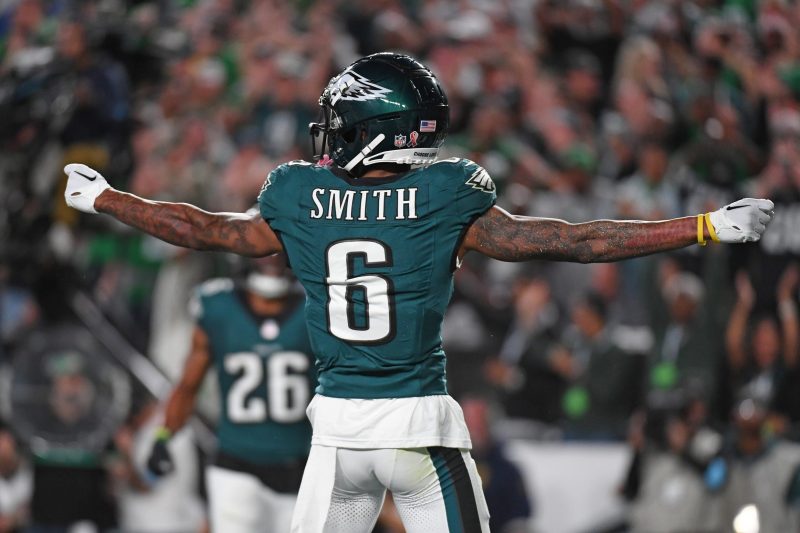Opinion: Sports need to treat mental health the same as physical

Maryland head football coach Mike Locksley became a staunch advocate for athletes’ mental health after the 2017 death of his son, who was diagnosed with schizoaffective disorder and posthumously with CTE. This is Part 2 of a two-part series on mental health in youth sports, knowing the warning signs and how to help. Read Part 1 here.
Mike Locksley coached college football at both Illinois and New Mexico from 2005 to 2011. His son, Meiko, was a star high school quarterback in both states.
Meiko signed to play at Youngstown State in Ohio, where he started to change.
He stopped going to class and started having uncharacteristic discipline issues. As he moved from school to school, he lost weight, began hallucinating and seemed to lack the ability to understand conversations. He also sustained a concussion while playing at New Mexico, not his first head injury over the years playing football.
Locksley remembers being embarrassed by his son’s behavior.
“He’s dealing with schizophrenia,” Maryland’s head football coach recalled. “He’s calling people that were friends of mine and having these awkward, weird conversations and they have no clue because he doesn’t have a cast on his arm or crutches [like with physical ailments].’
It took a lot of learning and reflection for his thought process to change — one he now advocates for and uses with his own teams.
“After a while I got tired of feeling sorry about it and said, ‘What’s so different than an ACL?’ My approach has been to attack it. To make it cool. To make it OK.”
When Locksley spoke in May at Project Play Summit in Baltimore, he was asked to help the audience understand why mental health advocacy is such an important issue for him.
“It starts with failure,” he said. “I had a son, Meiko Anthony Locksley, who was a Division I football player. … He dealt with mental health issues before he was killed.’
Meiko was shot and killed in nearby Columbia, Maryland in 2017 while he was a student at Towson and his father coached at Alabama. He was posthumously diagnosed with CTE.
‘You know, mental health never affected me, and now it was really personal for me because I saw a son that was a normal football player at the age of 21 struggle with understanding myth from reality.’
“And it just happened, just almost like that for me,” he said, snapping his fingers.
Then, Locklsey talked about the look. The one he saw in his son’s eyes but didn’t recognize at the time.
“It’s that look where you can all see a person’s soul,’ Locksley said. ‘I said to myself, ‘I’ve had a lot of football players over my 34 years that I’ve seen that look, but I didn’t recognize it.’ The tragedy of losing of my son, which may have been attributed to his mental health issue, has motivated me to take care of the 18 to 22 year olds that I have had the opportunity to develop from boys to men.”
The crowd, which was filled with coaches and educators, applauded. And did so again when Locksley mentioned Maryland passed a bill requiring the state’s Department of Education to train coaches at public schools to recognize indictors of mental illness.
Eight states require mental health training for high school coaches, according to a recent University of Connecticut study. Another initiative, the Million Coaches Challenge, has brought together organizations to train coaches in issues of youth development, including mental health.
The death of Meiko taught Locksley to coach with greater awareness of his players’ mental health. He is hoping coaches at all levels follow his lead.
Treat the injury and the player’s emotional state
How are things going for you?
Tell me what is going on.
You OK?
These are questions we can ask our athletes if something doesn’t seem right. Be proactive, even if you don’t suspect anything.
If he or she is recovering from an injury, ask, “How are you feeling after treatment today?”
Clayton Young, an Olympic marathoner who participated in a National Athletic Trainers’ Association mental health briefing last summer, says the athlete’s tone of voice and how they respond about the injury can give you a lot of information about his or her emotional state.
Young recovered from knee surgery to finish ninth out of more than 70 competitors in the men’s marathon at the Paris Olympics. As he rehabbed, Young recalls the simple act of a late-night text from his athletic trainer asking about him when he was feeling vulnerable.
It made him feel like someone really cared about him.
“Running is not only my career and my way to provide for my family and my livelihood, but it’s also my passion, my identity,” Young said. “It’s my drug, you could almost say. And when that’s all taken away from you as an athlete, it can be very, very difficult.”
And if it’s a major injury, such as an ACL tear, it can take nine to 12 months to get back into action — if they get back at all, said Marci Goolsby, the WNBA’s director of sports medicine.
“They lose their social network in a lot of ways when they’re out of sport,” said Goolsby, who also coaches her daughter’s middle school basketball team. ‘And it’s higher in some sports than others, like lacrosse, and women’s soccer, which we see a lot of these injuries, and it can be incredibly impactful.”
If you’re hurt, it can help to continue going to practice and social functions with teammates.
Coach Steve: Five tips for a full recovery from an ACL tear
While rehabbing, Young found having a training buddy also recovering from injury can lift spirits. For him, it was Olympian and two-time NCAA cross country champion Conner Mantz.
“We started forming this relationship but also motivating one another,” Young said. “We share a lot of struggles and training together. We relate in a lot of areas of our life. He’s somebody that understands me best. And I think everybody should have a Conner Mantz in their life, whether that’s in running or in the office or work or with family.”
Talk about it. Gain trust.
When new players and coaches join Maryland’s football program, Locksley goes through an exercise he calls “three H’s.” At the end of practice, everybody shares a moment of greatest happiness, a hardship and a hero.
“That way, we get to personally know them,’ Locksley said. ‘And we have an open door policy when it comes to the mental health piece. It’s real for us in our program. We talk about it a lot.”
Sitting next to Locksley on stage at the Project Play Summit, Mayrena Hernandez, an assistant professor of athletic training at Sam Houston State University in Texas, spoke to the importance of kids feeling comfortable.
Hernandez conducted a study with athletic trainers and adolescents of low socioeconomic status. She found trainers noticed emotional cues if they were good listeners and understood mental health issues.
For example, Cross country runners in the study were getting injured, but why? Athletic trainers were able to determine their gear wasn’t adequate. They were wearing the same torn shoes.
‘Or they noticed that, oh, this kid, he’s taking the bus instead of having a new car like all his classmates,’ she said. “Surprisingly, some of those kids are really good at hiding those things so that they can assimilate with their peers. And so the athletic trainer is able to really tap in and gather those clues to figure out, ‘OK, is this athlete going through some of these disparities in society compared to their peers?’”
Only about 37% of U.S. high schools have access to a full-time athletic trainer, Hernandez said. One initiative in Los Angeles, Team Heal, is a hospital community program that helps get athletic trainers in schools.
An athletic trainer is one more resource for an athlete and their families. One more person who can watch for that look.
“I always talk about that look,’ Locksley says, ‘I know what it looks like now and it’s like, ‘What’s going on? Are you good?’
‘These kids all want to tell you their issues. But you got to have the trust, know that you care about them, before they open up.”
Steve Borelli, aka Coach Steve, has been an editor and writer with USA TODAY since 1999. He spent 10 years coaching his two sons’ baseball and basketball teams. He and his wife, Colleen, are now sports parents for two high schoolers. His column is posted weekly. For his past columns, click here.
(This story was updated because an earlier version included an inaccuracy.)






